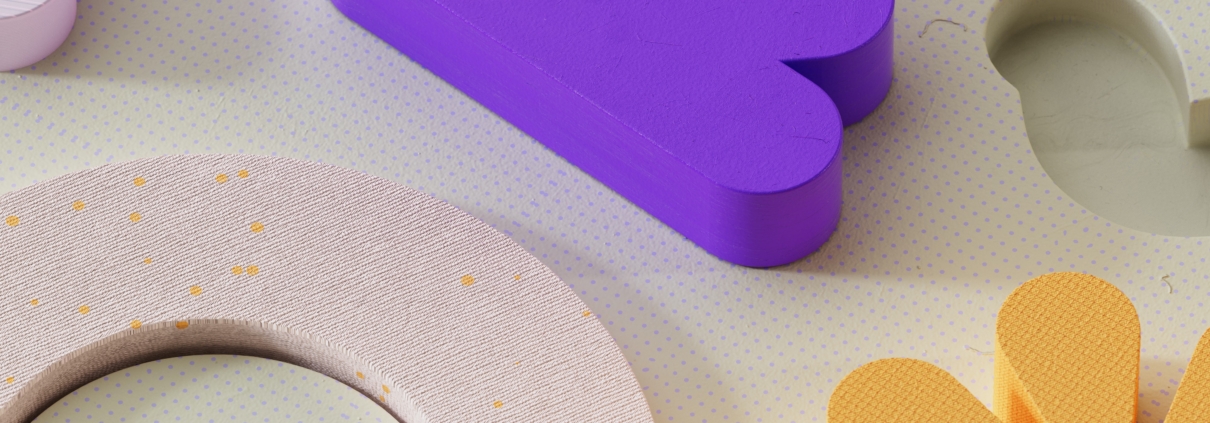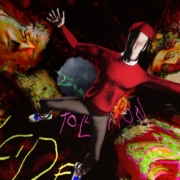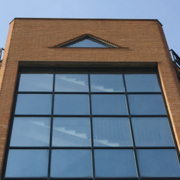3D design, 10 tips for the “aspiring motion designers.”
3D rendering and content creation are currently a growing trend.
They can help communicate complex technical aspects, engage users or amplify a brand.
In this article, I want to share with you some tips and relevant aspects that can help you develop further your 3D skills and take them to the next level!
Let’s have a look!
1_Concentrati “sui fondamentali” del 3D
2_Inizia col mischiare rendering 3D e 2D
3_L’illuminazione 3D è fondamentale
4_Impara ad inquadrare il tuo soggetto
5_L’imperfezione crea la perfezione
6_Esplora rendering 3D di stili differenti
7_Utilizza un sistema di rendering “a nodi”
8_Usa l’interpolazione lineare
9_Incomincia da una libreria 3D
10_Scegli il giusto “Elemento”
1_Concentrati “sui fondamentali” del 3D
I want to tell you the truth: 3D is not easy!
We often hear about the field of 3D as something easy to learn, but, in my opinion, this is not true.
3D is a complex and broad area of motion design, computer graphics, and VFX.
Even if render times are recently sped up a lot, for working with 3D, you must master many critical aspects of computer graphics.
You should know how to generate geometry, make animations, rig characters, light your scene, create shading for the elements and render the image.
Does it sound easy?
It is not!
It takes years to master all those aspects, especially if you are a newbie in 3D!
The good news is that you do not need to manage all these aspects ideally to begin creating some good 3D works.
A secret to a good understanding of 3D is to master the essential fundamental aspects!
Learn how basic principles work and what is the logic behind them. Manage the key aspects easily, and your work will improve very fast!
Master the essential tools, workflows and shortcuts, and you will understand the most common tasks every 3D artist does!
If you can easily manage the core principles and understand how they are applied, the quality of your work will increase soon!
2_Start by Blending 3D with 2D
An excellent way to start learning 3D is to begin by incorporating it into your 2D motion design pieces.
Start by including animations of some simple icons or abstract elements.
By starting this way, you will get more and more confidence in 3D, and you can widen the quantity and quality of your 3D animation project by project.
By doing so, you will start incorporating 3D into your projects, even if it initially sounds intimidating.
3_L’illuminazione 3D è fondamentale
Learning and mastering lighting techniques is one of the most critical skills to help your 3D renders shine.
By using lighting correctly, you will be able to highlight specific areas of your model, drawing attention to a particular detail by giving value to the shapes and the materials of your 3d models.
You should be able to master the basic lighting propriety, manage the different kinds of reflections and get the power to control where they will appear.
A single HDRI image cannot light a scene or a model properly.
You need to be able to place specific lights to tell particular aspects of your story.
When you do that, your 3D renders will get an insane upgrade that will help you get more clients and profitable jobs!
4_Learn how to frame your subject
Every project has a “hero element”.It could be a product, a character or a simple shape.
Knowing how to frame it correctly with your 3D camera is crucial.
Being able to frame a “cowboy shot” or a “full close-up” gives you the confidence to iterate with your virtual actors properly.
The 3D camera within your favourite software has the same properties as a real camera.
Focal length and shutter speed are also some valuable concepts you should know about.
Good framing and composition are essential skills for a good design and animation.
They will substantially upgrade your 3D renders and make them look more like cinematic shots.
5_Imperfection makes perfection
To create a detailed and realistic 3D, you must do it imperfectly!
Yes, you heard well!
One of the problems of 3D is that it makes everything looks too perfect and sharp.
In reality, everything you see around you is imperfect, dirt scratched and even not so straight!
To quickly see improving the quality of your 3D renders, I advice you to use imperfection textures within your shaders.
You can put them on the “reflection channel” to make your reflections more realistic or into the “diffuse channel” to make the primary colour of your shader more interesting. Another way to use them is to use them as masks to blend different kinds of shaders. By doing so, you will get more advanced realism.
You can also use these tips when you build 3D models.
A quick way to do it in Cinema 4D is by placing your object into an FFD deformer and starting to move some points and make the model “less perfect”; you can also use sculpting tools to make the shape of your model or character more natural.
The next time you watch an object, focus on imperfections and you’ll notice unexpected details!
6_Explore various styles
Nowadays, we all see impressive 3D photorealistic animations that look great, and we all want to do it!
Photoreal 3D is not the only language of 3D, and it may not be the most effective!
Consider how helpful it can be to animate some objects in 3D instead of recreating the effect in 2D animation software.
For example, by using “sketch and toon” within Cinema 4D, you could get abstract and exciting results without trouble with all the problems that photoreal renders can potentially have.
The human eye is well trained to recognize if something familiar looks fake or real, but if you explore more abstract styles, you have fewer troubles when experimenting with 3D!
I advise you to start by exploring different styles, and you will get some exciting and different results!
A 3D animation that is more graphical is also easier to include in your 2D motion design animations!
By experimenting with different styles, your 3D would look fresh and unconventional and grab the viewers’ attention!
7_Utilizza un sistema di rendering “a nodi”
If you want to push forward your 3D shading, I suggest learning a node-based render software that uses physically accurate shaders.
The most common and famous render engines for motion design are Redshift, Octane and Arnold.
By learning a node-based system, you will deeply understand how 3D shading works by editing shaders procedurally, which means you can edit them without worrying about modifying the final result permanently.
You can apply those concepts to any other render engine because they share the same core principles!
You will be aware of the critical aspects that make your shaders look great, and you will dive into procedural shadings, which is very useful!
8_Go linear
One of the most common errors I notice in many “aspiring motion designers” and 3D artists is using the default ease settings of cinema 4D keyframes and using it in every keyframe they place.
My suggestion instead is to “go linear”!
In the “key interpolation” tab of Cinema 4D, set the default “key interpolation” in linear mode and set the ease of your keyframes only when you need it, as you would do in After Effects!
Linear mode is even more advantageous when you have to animate cameras.
By animating your camera in linear keyframes, it would be easier to edit different shots together, and you will end up with better camera animations!
9_Incomincia da una libreria 3D
Libraries are an excellent starting point for start building your 3D projects!
The internet era offers a wide range of high-quality products ready to help you at a reasonable price.
As we said earlier, 3D is an extensive area of computer graphics, and you do not have to know every aspect of it before you start creating engaging animations.
3D models, shaders, HDRI, textures, render farms; there are many elements that you can buy to support your 3D projects!
Investing some money in libraries and assets guarantees a very high level of your 3D projects without needing to master all the 3D aspects.
10_Choose the right “Element.”
Did you start working with 3D but think it is too complicated?
Do you not like the idea of learning a new software from scratch?
A suitable solution for you could be “Element 3D”.
“Element” is an After Effects plug-in by Andrew Kramer and is available at Videocopilot.
This powerful plug-in allows you to import and render 3D models within After Effects; you can also animate them at light speed!
The shaders are pretty good, and you can also make stylized looks!
In my opinion, Element 3D is very suitable for animating 3D products and 3D texts.
It will also save you time by rendering directly within After Effects in real-time!
If you find 3D too complicated but still want to explore it, consider starting your journey with Element 3D.
“Element” will widen your After Effects skills, and you can have your first approach in 3D without buying expensive programs and spend years studying and practising a considerable amount of information!








